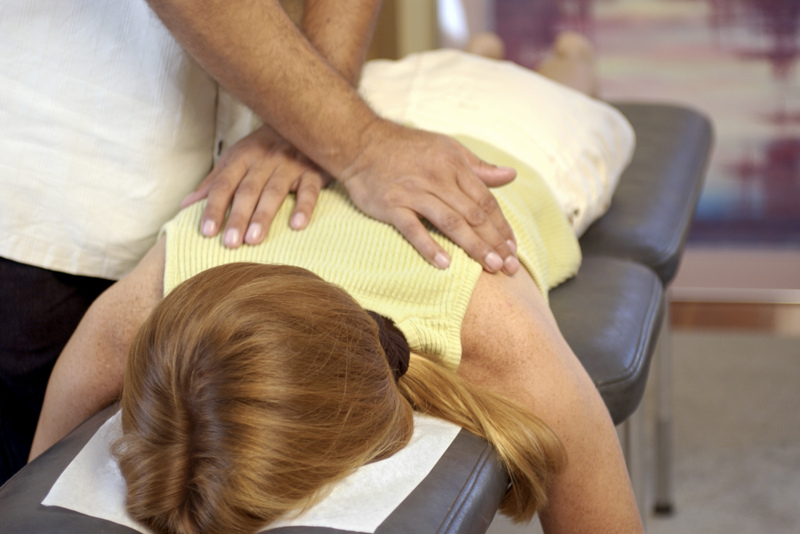MONDAY, Sept. 12, 2016 (HealthDay News) — People with severe chronic constipation may get relief from a more modern type of acupuncture, new research suggests.
After eight weeks of treatment with electroacupuncture — acupuncture involving electrical stimulation — study participants experienced significant symptom and quality-of-life improvements, the study found.
Electroacupuncture uses thin needles inserted beneath the skin that are attached to a device that sends electric pulses into the body.
The study findings suggest a safe and effective option for difficult-to-treat patients, several gastroenterologists said.
“It is heartening to see such rigorously tested alternative therapies, since so many of them are administered without any evidence to support them,” said Dr. Christopher Andrews. He’s a clinical associate professor in the gastroenterology division at University of Calgary Cumming School of Medicine in Canada.
Dr. Henry Parkman, a professor of medicine at Temple University School of Medicine in Philadelphia, said: “This seems to be a good treatment for the refractory patients — those not responding to conventional medical treatments.”
The study involved people with chronic, severe “functional” constipation. These people have difficult, infrequent bowel movements — no more than two per week — not due to other medical conditions or medicines they may be taking, such as opioid painkillers.
For the study, the researchers randomly assigned 1,075 patients to one of two groups. Half received electroacupuncture with needles that pierced the muscle layer of the abdominal wall. The other half received “sham” treatments, with shallow needles at points not considered therapeutic in acupuncture (the “control” group).
Acupuncturists at 15 Chinese hospitals administered the real and sham treatments, consisting of 28 half-hour sessions.
Over the eight-week treatment period, 31 percent of patients in the electroacupuncture group had three or more bowel movements in a week, on average. Only 12 percent of patients in the control group achieved that level of relief.
Bowel movements of three per day to three per week are considered within the range of “normal,” according to the American College of Gastroenterology.
The effects persisted well after treatment. Almost 38 percent of electroacupuncture patients reported three or more bowel movements a week, on average, during the study’s 12-week follow-up period, compared to 14 percent of sham therapy patients.
“We were indeed surprised when we first saw these results,” said Dr. Jia (Marie) Liu of the China Academy of Chinese Medical Sciences in Beijing. She is one of the study authors and the research team’s coordinator.
Liu cited two possible explanations for the post-treatment effects. For one, electroacupuncture has a “good sustained effect, which is one of its advantages,” she said.
What’s more, the research team evaluated weekly average bowel movements during the treatment and follow-up periods, not just end points, as in many prior studies.
“[Electroacupuncture] needs time to take effect and got its peak at week eight,” she said.
Dr. Daniel Hsu, who practices acupuncture in New York City, said acupuncture — whether through traditional needling or with electrical stimulation — works in two ways.
“It makes the body release its own naturally occurring painkillers” and “it helps the body calm the nervous system,” he said.
Stress can certainly affect digestion and cause constipation, Hsu explained. Acupuncture “flips the switch” on the body’s fight-or-flight response, restoring normal body functions such as defecation, he said.
One potential drawback is the frequency of treatment. Patients in the study received electroacupuncture three to five times per week over eight weeks, which might be a burden for some people, the study authors acknowledged.
On the other hand, because the treatment effects lasted for many weeks, it may be that patients don’t need continuous treatment, Andrews said.
Additional studies are needed to evaluate longer-term outcomes, the study authors noted.
In the United States, acupuncturists are licensed in almost every state but are most prevalent in big cities, particularly on the East and West coasts, Hsu said. He added that most acupuncture colleges teach electroacupuncture.
Neither Medicare nor Medicaid covers acupuncture but some private insurers cover a fixed number of sessions under their policies, Hsu said.
“A lot of practitioners do take insurance if it’s covered,” he said. If not, patients must pay out of pocket.
Treatment costs may vary widely from one practitioner to the next. Fees generally range from $60 to $120 per session.
The study was published online Sept. 12 in the Annals of Internal Medicine.
More information
The U.S. National Institutes of Health has more about acupuncture.
Copyright © 2025 HealthDay. All rights reserved.

